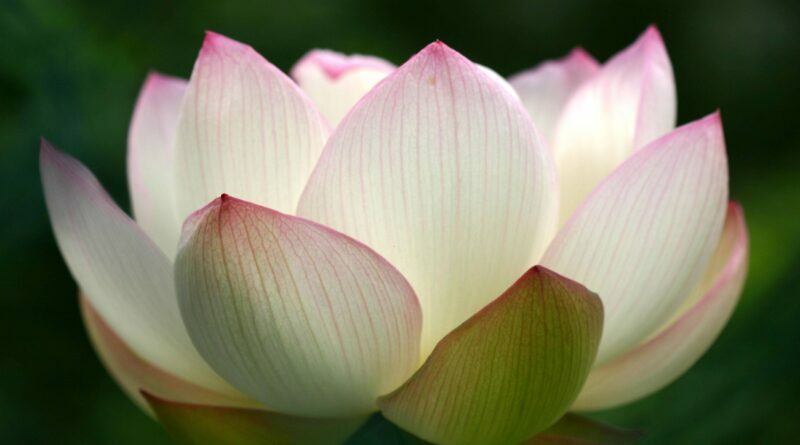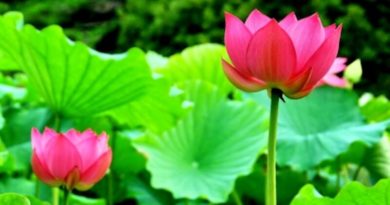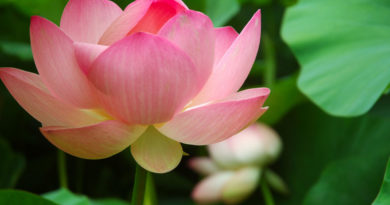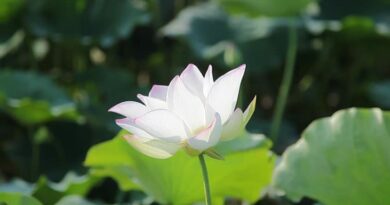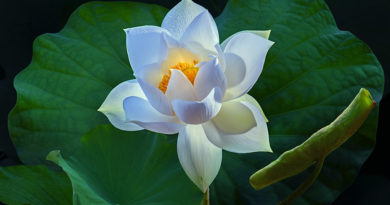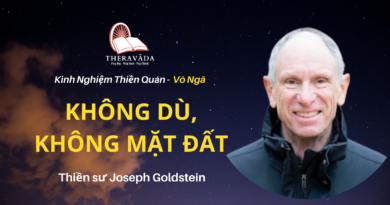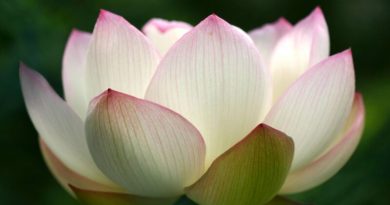DHAMMA RATANA – CHAPTER 1: THE THREE ESSENCE
DHAMMA RATANA – CHAPTER 1: THE THREE ESSENCE
Today’s Dhamma talk will be on the three essence, in connection with K 50,000 worth alms-offering by U Ba Khine and Daw Tin Tin at the ceremony of ordination of monkhood, ceremony for the initiation of novicehood and the ceremony for the initiation of nunhood of their sons and daughters. Lord Buddha had pointed out in the Dhammapada Pali the three essence. The Athakatha master also explicitly explained the three essence. Some people take things which are not essence as essence and they do not recognize the real essence as essence. The listeners of to-day’s dhamma talk will find things which are essence and which are not essence in themselves.
There are three types which are essence and three types which are not essence. There is difference between things which are considered as essence by people who have less perfection of virtues and by those who have mature perfection, like Buddha-would-be. Those people with less perfection regard wealth as essence and think that riches and properties are dependable and lasting. They also consider their physical bodies as better and more substantial essence than wealth and properties. If anything happened to their physical bodies they rather let any amount of wealth be spent. If there is danger to their lives they would let the riches be spent and even let parts of their bodies be destroyed and, preserve their lives. To them life is more valuable essence than the physical body.
Wealth and Dana
There are more people with less perfection of virtues and they consider what is not essence as real essence. However, Buddha-would-be and those with mature perfection regard riches, physical body and life not as essence. I believe that listeners will know themselves. In one existence, Buddha would-be was a son of millionaire Brahmin. Upon the death of his parents he asked his treasurers to open the treasury.
There he found unaccountable riches and wealth in the names of his great-grand-parents, grandparents and parents. Only the names of the owners and the riches were found, however the owners were dead and gone, leaving their accumulated wealth behind. He felt remorseful and pondered thus, “Properties and riches are not essence and they are also left behind. Since wealth and properties are associated with five enemies, they are not essence
Wealth and properties can be destroyed at any time by fire, flood, bad rulers, robbers and unworthy heirs. Nowadays, you can see for yourselves how riches and properties are damaged by storm, fire, flood, robbers, etc.
Motto: As associated with five enemies, wealth and properties are not essence.
Then which is the essence? The true essence is dana, giving away riches and properties which are not essence. There are two kinds of dana essence. (I) Dana by giving away materials things and properties. (2) Dana done by volition. After giving charity what is left behind is merit, as the consequence of good volition and deeds. Although you give away materials as dana, it is no longer rupa (matter) dana but it is nama dana. This benefit of good volition and deeds is intangible and unperceivable. It is the essence which exists in yourself and could not be harmed by five enemies. This essence is a forceful support for the attainment of nirvana. Therefore you all should offer alms dana with unshakable volition and happiness and extract essence from wealth and properties which are not true essence.
Motto: From wealth and properties extract dana essence.
Most of the Buddhist in Myanmar spend their honestly earned money thriftily and wisely and save up what is left, with the aim of giving alms- dana and charity. They donate for the construction of monasteries, pagodas, ordination of monkhood, novicehood and nunhood. It is, in fact, very fortunate to be in the presence of Buddha’s Sasana. Today U Ba Khine and Daw Tin Tin extract dana essence from their wealth, which are not essence, by offering K 50,000 worth of alms-giving dana.
Physical body & Sila
“Physical body is not the essence” said Buddha-would-be. It is always associated with various diseases. You may be healthy today however you may not be tomorrow. There is none who is not afflicted by disease. “He who said not to have any disease, is a stupid one”, remarked Buddha. Everyone suffers pains or diseases more or less. Whatever you have in your physical body could be considered as diseases. Whatsoever excretes from your body, such as tear, saliva, sweat, excrements, etc. are diseases for the reasons that if they do not regularly or normally excrete, then something is wrong and also if over-excrete then you do not feel well. Anyhow which is essence?
“Extract essence from the physical body by paying obeisance to Sanghas, parents, elders; by observing precepts; by attending to the needs of Sanghas, parents and elders”. said Buddha-would-be.Though you may be fit to pay obei sance to Sanghas, parents and elders or to attend to their needs today, you may not be able to do so tomorrow if you are afflicted with sickness. Paying respect to Sanghas, parents, elders, to observe precepts and to attend to their needs are done by your physical body. Hence it is said to extract essence from your physical body.
Motto: Physical body which is associated with diseases is not the real essence.
You may be healthy today, but you are not sure for tomorrow. Though you can meditate today, you may not be able to do so tomorrow. Everyday you all observe precepts, pay respects to the Three Gems, parents and elders and also attend to their needs. All these are carried out by your physical body, therefore it is a delight that you could extract sila essence from your body. Attending to the needs of Sanghas, parents and elders may also be regarded as sila.
Motto: Extract Sila essence from the physical body.
Sila essence is dependable as it will be a supporting factor for the attainment of nibbana. The first (zawana) thought moment, is benificial right inthe present existence, whereupon you will be wealthy and healthy. The conse quences of 7th (zawana) thought moment will be manifested in the next existence, such as to be born in a better life. The middle (zawanas) thought moments will be effective from third existence until you attain nibbana. Everyday you are extracting sila essence from your body which is not a real essence, by observing precept, by paying obeisance to Sanghas, elders and parents and by attending to their needs.
Life and Vipassana
You might suffer diseases, however you must extract sila essence (from your body) which is beneficial and supportive to attain nirvana. You should be elated that you could extract sila essence because you have the opportunity to be alive in the presence of Buddha’s Sasana. Buddha – would-be said, “Life also is not essence, since it is not dependable and lasting”. It is impermanent since rupa-life and nama-life are always becoming and vanishing. Those who have attained Udayabbaya Nana Stage will perceive it lucidly. Whatever you note, you will find it is becoming and dissolution, becoming and dissolution. Therefore this life is suffering from impermanence (anicca). In a minute or in a moment life can be destroyed.It is not lasting nor depend able. It is not essence.
Motto: As tormented by impermanence, life is not a real essence.
Rupa-life and nama-life are ever tormented by the process of becoming and dissolution. As life can be destroyed in a moment and it is always tortured by impermanence, it is not dependable. It is therefore not an essence. Vipassana is the real essence. Thus reflected Buddha-would-be. Vipassana is the only means of escaping from this suffering or torture.
Motto:Extract vipassana essence from life.
In fact, vipassana actually means to note repetitively the intrinsic nature of the three characteristics. (i.e. imper manence, suffering, selfless.) in whatsoever manner they may appear in yourself. It is the vipassna as practised by yogi who have reached Udayabbaya Nana and Bhanga Nana Stages. The actual vipassana (impermanence, etc.) is not vividly apparent to the beginners. The beginners strive to note the nature of movement i.e. paramattha– reality or absolute truth, not the form i.e. pannatta– conventional truth. That is vipassana for the beginners. They note closely and mindfully the movements in each action while sitting, walking, etc., but not the form as legs, hands, etc.
There are three types of essence:
(1) Dana – giving away or charity
(2) Sila – observing precept
(3) Vipassana – insight meditation
Dana and sila essence gives life-pleasure of human beings, devas and brabmas, but does not guarantee liberation from the cycle of existence. It is the essence which will bring you happiness and sensual pleasure while journeying in samsara. By practising Samatha, you will enjoy brahma life for years, however it will not take you to the end of the journey. Vipassana is the only dependable essence which can take you to nirvana. “Satisfied not by dana, sila and samatha” Buddha often reminded. “You may reach the highest realm of the 31 planes, nevertheless one day you will return to the realm of sufferings” said Buddha. Dana, sila and samatha will not emancipate you from the cycle will be corn lete with sensual pleasure an happiness.No one would like to poor and unhappy existence as a wayfarer of samsara. So they have to give dana, observe precept and practise samatha, which are not real essence.
Insight Meditation
Vipassana is the only way out from the rounds of samsara. Due to the 4 golden opportunities you all are fortunate to be able to practise insight meditation. These 4 opportunities, pointed out by Buddha, are:
(1) To be a human being
(2) To be alive
(3) To be in a favourable situation to listen to dhamma
(4) To be in the presence of Buddha’s Sasana
Where there does not exist Buddha’s Sasana then there is no opportunity to practise insight meditation. Insight meditation is the only guarantee for the emancipation from samsara.
“Suppose, Lord Buddha, the moon, Lord Buddha, the sun does not arise there exists no sasana. In the absence of sasana one may not hear even the name of paramattha, dhamma and insight meditation, for there will be no mention of them” said Buddha. In the absence of sasana it is possible to give dana, to observe moral conduct and to practise samatha, however these practices will not close the door to lower abodes. Now you have the 4 golden opportunities, thereupon you should endeavor to practise insight meditation under right guidance Nipassana is most dependable and substantial essence for the emancipation from samsara. So do not let the time pass away, practise insight meditation diligently whenever time is available for you.
Though you may encounter difficulties at first in practising insight meditation, conscientious practice will overcome them. You will experience dukkha vedana at the beginning, suk-ha vedana in the middle and upekkha vedana at the end. Thereupon dhamma is not easily gained as disturbed by kilesas such as anger, greed and ignorance. When you suffer pain, anger arises now and then, therefore there is no progress in meditation. It is important to know the right method of noting vedanas. I will discuss it briefly.
When you experience pain and numbness, be patient and do not change position. Frequent changing position will weaken concentration. There should be no worries and anxieties about whether you will gain dhamma or not, whether pain will last forever. The nature of vedana is to be painful and the duty of yogi is to note the pain. When the pain increases yogi becomes tense physically and mentally. Relax both physically and mentally and try to observe whether the pain is on the skin, in the flesh, in the bone, nerves or in the marrow, so as to know the extent of pain. Thus fixing your mind right on the pain you are concentrating on vedana. Then note the arising and disappearing of pain and also its shifting from one part of the body to another. Pain may increase or decrease with each noting. You must note diligently. Then concentration will become firm and stronger.
With each noting pain may increase and reach the maximum. Then it may decrease again and disappear or shift to another part of the body. Now you have developed a stronger noting mind and begin to comprehend the intrinsic nature of vedana. In other words vedana is not continuous, it is always changing, therefore it is impermanent, to note the changing and shifting vedana is suffering and uncon trollable. When you note “painful”, “painful”, pain disap pears. Afterwards it arises again you note it, it disappears again. Arising is becoming and disappearing is dissolution. Whereupon pain is no longer the principal object for noting, however the noting mind is fixed on the process of arising and disappearing. Thereupon noting mind begins to overcome the pain.
When your concentration is strong and mature, arising is no longer distinct, nevertheless disappearing becomes the main object of noting. Yogi who have reached the Bhanga Nana Stage will experience it vividly. Since they do not know how to express, some yogi said that as soon as they aimed to note, there was no more pain, it just disappeared. What actually happens is, as soon as there arises intention to note, pain disappears and there exists just the noting mind and no pain to be noted. Pain arises and disappears instantly, hence there is nothing to note. Vedana is not permanent, so also is the noting mind. Yogi, therefore, thinks that it is better to experience vedana, so that his mind does not wander away but has to note vedana. Thereupon anger (because of pain) no longer exist, that means noting mind has overcome vedana.
Motto: The repeated arising anger in Dukkha Vedana must be discarded.
Since concentration is well developed, after the Sammasana Nina Stage, noting is smooth and there is no experience of dukkha. At the early Udayabbaya Nana Stage the process of becoming and dissolution is not so vivid and yogi feels lightness in both body and mind. He is also physically and mentally pliable and workable . Noting goes on of its own accord, easily and smoothly. Those yogi who have to change posture frequently in the early stages of insight-knowledge, at this Udayabbaya Nana Stage could sit for one hour without changing. Those who did not change frequently in the lower stages of insight-knowledge could sit one or 2,3,4,5 hours without changing. As the meditation practice gains momentum, noting will go on of its own accord, smoothly and easily. It appears to yogi that he is effortlessly watching arising and vanishing of objects which are vivid and clear.
During the lower stages of insight-knowledge yogi needs to put more effort to note but not in the higher stages. As he has perfectly practised both physically and mentally, noting goes on automatically. Then there is peace and calm in both body and mind. Some yogi said that they have never experienced before such mental peace and calm. Moreover in a sitting posture their body is erect like a doll, without shifting now and then. This is what yogi will experience in the Udayabbaya Nana Stage. It is vipasana piti- (joy) or bliss of meditation. Leave alone the common people, not even devas can have such opportunities.
While practising in a secluded place yogi may experience vipassana joy and bliss. Perhaps some sort of attach ment to this joy and bliss develops and yogi may cherish it instead of discarding it. The repeated desire for this joy and bliss (sukha vedana) is regarded as the manifestation of raga (lobha) in sukha vedana. The repeated arising raga in sukha vedana must be discarded, so that progress in meditation practice may not be slackened.
Motto: Repeated arising attachment to pleasure means internal arrest in progress.
Respectfully and mindfully reflect to make sure whether it is physical or mental pleasure. If mental peace and calm is more distinct, then note mentally “peaceful” “peaceful”. Concentration becomes keen and yogi is cognizant of the fact that feeling of joy arises and disappears swiftly when noted. Quick arising and disappearing with each noting appears to yogi as unpleasant. In other words it is dukkha or painful to note successively the continuous process of arising and disappearing of joy. As he could not keep pace with this process of fleeting arising and disappearing, he begins to realize that there is nothing to recognize as joy but tiredness only. Now sukha is seen as dukkha. Whereupon raga (attachment to joy) is overcome and eliminated by successive noting. It is a fact that no one desires dukkha, therefore note it instantly when it arises.
Motto: When sukha arises it must be noted as dukkha.
In upekkha vedana, moha arises, therefore there is no progress. It is more apparent in the Sankharupekka Nana Stage which is quite close to magga and phala. However yogi takes quite a long time to reach magga and phala.With ardent noting, concentration progress and yogi reaches Sankharupekkha Nana. It is the stage of insight viewing things equally. Upekkha vedana is conspicuous in this stage. There is no fear or fondness. One is no longer disturbed by worldly or unworldly likings and dislikings. No attachment to what soever is happening. At this stage noting is easy and it carries on of its own accord. Well practised yogi, perhaps may remember such experiences.
Motto: Free from fear and fondness
Equal view of sufferings and happiness
Contemplation comes with no difficulty
Sankharu’s three characteristics of equanimity
(Mahasi)
When noting becomes effortless yogi is deluded and may not perceive arising and passing away of objects in their true nature. Delusion (moha) sets in when noting is easy and performs of its own accord.
Motto: The repeated arising delusion in upekkha vedana, must be dispelled.
In order to achieve his desirous goal yogi must contemplate and dispel the delusion. Upekkha vedana is quite conspicuous in Sankharupekkha Nana Stage. Progress in meditation is slow as yogi needs not put much effort to contemplate and goes easy. He used to tell the instructor, “Contemplation is good”, but could not explain what he meant by ‘good”. He is no longer aware of becoming and dissolution, hence there is no progress in insight develop ment. Upekkha vedana is so subtle that it is not easy to note it, therefore, it is better for the yogi to leave it and revert to noting what is distinct and clear i.e. rising and falling which he has well practised. With improved practice and mature knowledge, those who have the Bhanga Nana as base can easily recognize the faults and dangers at the Sankharupekkha Nana Stage. When concentration becomes firm and strong, the process of becoming, noting, cessation of arising and passing away is more apparent to yogi. Thus delusion is dispelled as the awareness of impermanence arises. Bhanga Nana and moha (delusion) are antithesis. When moha manifests in upekkha vedana, it must be instantly eliminated.
After listening to this sermon on “Three Essence” may you all be able to practise in accordance with the Buddha’s instruction. With diligent contemplation may you all imme diately realize your most aspired Nirvana which is free from all sufferings, by practising with ease.
Sadhu — Sadhu — Sadhu
May all beings in ten directions be free from all kinds of danger or harm. May they be free from both physical and mental sufferings.
May they be able to bear the burden of life with physical and mental happiness.

